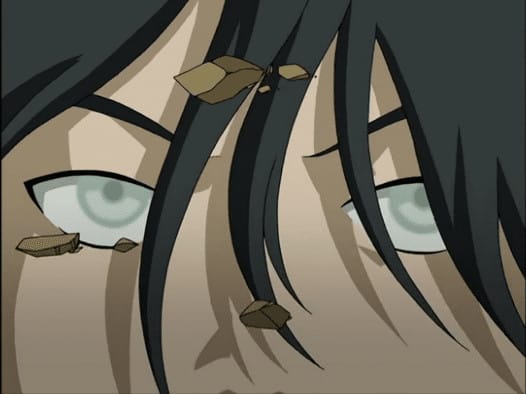Every Episode of ‘Avatar: The Last Airbender’ Ranked
Few other series have captured the many nuances of wartime quite as well as this one, which believe it or not was marketed as a kids show.

20. The Waterbending Master (1×18)

We already knew that sexism existed in the avatar world (thanks, early Sokka) but the misogyny on display in “The Waterbending Master,” which is embodied by a male tribal elder and influenced by centuries of tradition, is a trickier topic to tackle. As usual, Avatar does it gracefully. When Katara and Aang finally find the waterbending master they’ve been hoping to meet all season, they’re shocked when he refuses to teach Katara, instead telling her to stick with the more feminine art of water-based healing. Naturally, a showdown ensues. “I’ll be outside if you’re man enough to fight me,” Katara spits at Master Pakku, and the two engage in an impressive icy showdown that leaves Katara in a state of primal rage. She’s finally able to push the tribe into the future and take her place as one of Pakku’s students, although disappointingly, his respect for her only appears once he identifies her as the granddaughter of the woman he once loved. As with most finale ramp-up episodes, the side plots are heating up too: Sokka meets and falls for Yue, a princess who sneaks out to see him despite her impending arranged marriage, and an assassination attempt on Zuko and Iroh’s life leaves the two at an advantage.
19. The Cave of Two Lovers (2×02)

Would it be too much to call this Avatar’s musical episode? The wildly entertaining detour features plenty of short ditties performed by a group of seemingly stoned hippy nomads, including “Don’t Let the Cave In Get You Down” (an unofficial title) and the titular storytelling song, which climatically ends with repeated yelling of the phrase “secret tunnel.” The latter song is ridiculously infectious and also, in my experience, the main way that Avatar fans find one another. At any rate, this episode is a blast, following the gang through a series of tunnels carved out by two Romeo and Juliet-style lovers. Sokka nearly loses his damn mind listening to the hippies sing, while Katara and Aang contemplate their feelings for one another. It wouldn’t be Avatar if it wasn’t a little sad, though: the story of the lovers, told in lush watercolor-style art, ends with the man being killed in war and the woman working to restore peace in his memory.
18. The Avatar and the Firelord (3×06)

Mysterious messages to both Zuko and Aang lead them both to uncover their shared history in “The Firelord and the Avatar,” an engrossing frame narrative that tells the tragic story of Avatar Roku and his best friend Sozin. The two were thick as thieves for most of their young lives; when Roku is announced as the next avatar at the boys’ joint 16th birthday party, Sozin gives him his crown. Soon after, though, things fall apart when Sozin proposes world domination under the guise of “sharing the prosperity” of the fire nation with everyone. They grow apart as adults, and Roku eventually learns that Sozin has gone ahead with his plan. The two fall out of touch for 25 years, until a Pompeii-like explosion devastates the island where a now-aged Roku lives with his wife. Sozin comes to save his friend but decides against it, ultimately leaving him to die of smoke inhalation. We’re told he spends the rest of his bitter life hunting down the new avatar, Aang, and wiping out all other airbenders in the process. A dark and heartfelt story of a friendship soured by hunger for power, “The Firelord and the Avatar” is the final push Zuko needs to realize he doesn’t want to walk in his predecessors’ footsteps. Uncle Iroh reveals that not only was Sozin Zuko’s ancestor, but Roku was as well. “Evil and good are always at war inside you, Zuko,” he tells his nephew in an uncharacteristic moment of intensity. “It is your nature, your legacy.”
17. The Northern Air Temple (1×17)

“The Northern Air Temple” covers so much important thematic territory that it’s hard to believe it’s under a half hour long. First, there’s the industrialization of Aang’s sacred land, a paving over of history that deeply upsets him while everyone else is impressed by the new technologies on display. Then there’s a lovely story about disability, as wheelchair-bound Teo is able to fly thanks to his father’s inventions. “[I decided to] build a new life for my son in the air,” he says, inspiring tears in his listeners, “then everyone would be on equal ground.” Finally, there’s the morally murky fact that the mechanist has been building weapons for the fire nation for years, but only under threats of death. The episode covers all this ground beautifully and treats each matter carefully, offering no easy answers.
16. City of Walls and Secrets (2×14)

“There is no war in Ba Sing Se” isn’t as well known a phrase as “We have always been at war with Eastasia,” but the chilling dystopic sentiment is just as Orwellian. The gang’s first day in Ba Sing Se, a city with more than a passing resemblance to North Korea, is creepy from the start, highlighted by eerie music when their near-robotic tour guide Joo Dee first appears. Team Avatar is given the run around by everyone they meet in the city, from the minor official who says he won’t talk for risk of losing his recently assigned new home, to Joo Dee, who gives the group a 6-8 week ETA on meeting the Earth King and explains away the walls which divide the wealthy from the impoverished as there to “keep order.” Most frightening of all, no one in the city seems to know there’s a war going on, or if they do, they mysteriously vanish. Jet is one such unlucky soul, and we see him brainwashed by a Dai Li agent who repeats the aforementioned mantra until Jet’s face goes slack with acceptance. In a moment straight out of a sci-fi movie, the episode ends with the introduction of a new hostess who also calls herself Joo Dee, signifying that the first woman slipped up and was replaced by a stand-in.
15. Sozin’s Comet Part 4: Avatar Aang (3×21)

The final section of A:TLA’s four-part series finale is fantastic if you can see it through your tears. Aang manages to defeat the firelord without killing him thanks to a bit of lost mythology that somehow manages to avoid feeling like a deus ex machina. For about three seconds, we think Toph and Sokka are going to die, and in that moment the line “I don’t think boomerang is coming back, Toph” is somehow the saddest thing in the universe. After years spent trying to conquer Ba Sing Se for the fire nation, Iroh finally realizes his destiny, liberating the city and returning it to its sovereign owners. Katara bests Azula and heals Zuko, completing her promise from a season earlier. Everything in this episode is running at 100%, but the art direction and music especially are at a series best. The goosebump-inducing finale score was performed by a live orchestra, and unequivocally deserves a spot in soundtrack history.
14. The Blind Bandit (2×06)

Toph’s introduction episode is basically an extended WWE match featuring a ringer in the form of a blind 12-year-old girl, and I’m not complaining. Team Avatar is woefully incomplete without her, and although her confrontational attitude doesn’t seem like a clear fit for their fairly peaceful dynamic, the high-drama excitement written into her first episode reaches through the screen and shakes you. She’s a ball of rage and a pro shit-talker, although at home she’s guarded 24/7 by a wealthy, overprotective father who cluelessly says that “she’s blind and tiny and helpless and fragile!” Not only is Toph clearly one of the best earthbenders on the planet thanks to her extra-sensory abilities and tough-as-nails attitude, but she’s also one of the best blind characters of all time.
13. The Siege of the North Part 1 (1×19)

The battle for the Northern Water Tribe is Avatar: The Last Airbender‘s “Blackwater.” Like the historic Game of Thrones episode, the early scenes of the book one finale focus mostly on the small, human moments that exist in the face of probably death, the specific poetry found only in chaos. Ashes fall on powdered snow. Locals call on spirits to defend and protect them in battle. An uncle embraces his nephew and remembers his own late son. And Aang prepares to defend the city to his dying breath, acutely aware of his past failures. When all’s said and done, Zuko steals Aang’s body when the boy enters the spirit world in a nearly-unbearable cliffhanger. If you don’t already buy that under its kid’s show exterior, Avatar is a huge, sweeping fantasy on the scale of Harry Potter or Lord of the Rings, this episode will convince you.
12. The Puppetmaster (3×08)

“The Puppetmaster” is the one and only time Avatar goes full horror, and the results are gloriously freaky. The team stops at a secluded town, and hear that people are disappearing in the nearby woods during each full moon. They also meet Hama, an elderly innkeeper who gives off strong Hansel and Gretel witch vibes. In a truly horrific origin story, Hama reveals that she hails from Sokka and Katara’s tribe and was captured by the fire nation during a push to eliminate benders. After years of torturous imprisonment, she escaped through her discovery of a dark art that can only be performed during a full moon: bloodbending. Hama’s story is harrowing because it blurs the lines between a survivor’s necessity and a sadist’s power-tripping pleasure. She’s a monster, sure, but she was pushed to become one by the men who trapped her and forced her to respond like a cornered wild animal. The episode never lets an inch of light through, and the possession-like image of bloodbent humans, complete with discordant bodily cracking sounds, is nightmare fuel. In the end, Katara is forced to bloodbend Hama to stop her from killing Aang, and is left in tears at the realization that she’s inherited Hama’s twisted legacy.
11. Jet (1×10)

“Jet” is often looked back on as a funky, ship-happy early episode about a cool group of Lost Boys-like renegades, led by the charismatic titular character. There’s so much more to it than that. Jet and his band of Freedom Fighters embody the same dangerous, misguided form of patriotism that’s dominated real-life news cycles for the past few years. He has a pathological hatred for the fire nation, to the point that he’s unwilling to discern between soldiers and civilians. He plans to flood a nearby Earth Kingdom village that’s occupied by Fire Nation soldiers, and uses his cult leader-like charm to convince Aang and Katara to help him under false pretenses. Sokka sees through his act and manages to evacuate the village, but for a brief, horrible moment, we don’t know that. As waves of deep water overtake the village, we see a young girl’s doll float ominously on the surface, Mulan-style. This was a victory, Katara, remember that,” Jet says, as if mass murder is something worth getting used to when done in the name of freedom. Who would be free, Katara asks, if everyone is dead. The story of “Jet” is heavy as a stone, but terrifyingly familiar.

